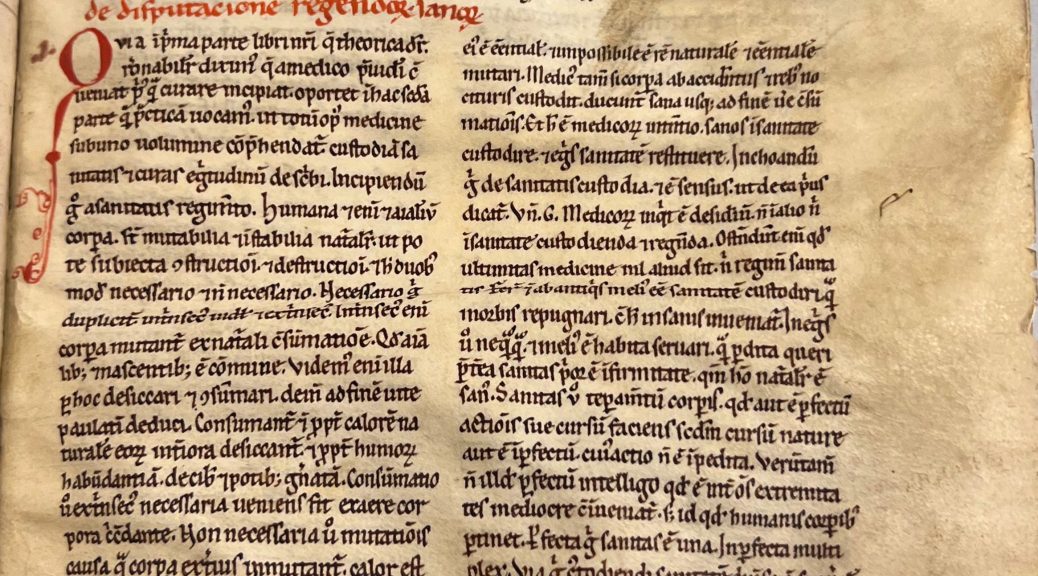Post contributed by Baylee Staufenbiel, Ph.D. Candidate, Department of History, Florida State University.
During my recent research visit to the David M. Rubenstein Rare Book & Manuscript Library, I had the opportunity to work with the Duke University’s extensive holdings on medieval and early modern medicine. The highlight of my trip was Latin MS 182, a copy of the Pantegni Practica, a foundational medical text traditionally attributed to Constantine the African. The Pantegni is particularly significant as it one of the most comprehensive and well-known texts to synthesize Greco-Roman and Arabic medical knowledge. The Practica is interesting as it was never completed by Constantine. Various copies appeared, but current scholarship is unsure of the provenance of the additional chapters. The Rubenstein’s copy has some of these chapters that may have been compiled or written by his pupil Joannes Afflacius, who’s attribution is given to the accompanying treatise Liber Aureus. Figure One shows the table of contents of the Rubenstein’s Practica (33r).

As I worked with the Pantegni Practica, I really began to think about the roles of translators, manuscripts, prints, and productions. Constantine’s contribution to the spread of Arabic texts is undeniable. I have begun to think locations like Monte Cassino and Salerno as more than places of translation and transmission of texts. They are nodes for the establishment of epistemic authority. The texts, knowledges, and individuals that came from these locations constructed what would become medical and anatomical practice throughout the medieval and early modern periods.
The reliance on authoritative voices continued with my exploration of early modern sources. For example, in “On the Liver” (Sec. A Box 183, 1654-1677, England), I saw a compelling look at how seventeenth-century physicians balanced classical authority with contemporary anatomical findings. A Latin paragraph detailing liver striation was followed by an extensive English letter discussing Hippocrates, Galen, and early modern physicians’ beliefs about the structure and function of the liver. Shown in Figure Two, this text demonstrates the enduring influence of ancient medical models, even as new anatomical observations complicated long-held theories. The discussion of Rufus of Ephesus (70-110 CE) and Schenckius (likely Johannes Schenck von Grafenberg, 1530-1598) reinforced how early modern practitioners continued to situate their work alongside pre-existing medical authorities. The letter references humoral theory mentioning the relative temperature of the liver as well as the questions about its role in conception (notably Galen saw the liver, heart, and brain as the seat of the natural, animal, and vital souls respectively). As my research is focused on perceptions of the uterus, reading a meditation on the function of a specific organ further suggests that understandings of the internal body were constantly in flux, even for a well discussed structure like the liver.

My time at the Rubenstein Library was an incredible privilege. The collection provided invaluable access to texts that shaped medieval and premodern understandings of medicine and the body. Engaging with these manuscripts firsthand enriched my assessment and evaluation of these texts in my current research project. I am deeply grateful to the Rubenstein staff, curators, and archivists who made this trip possible.


